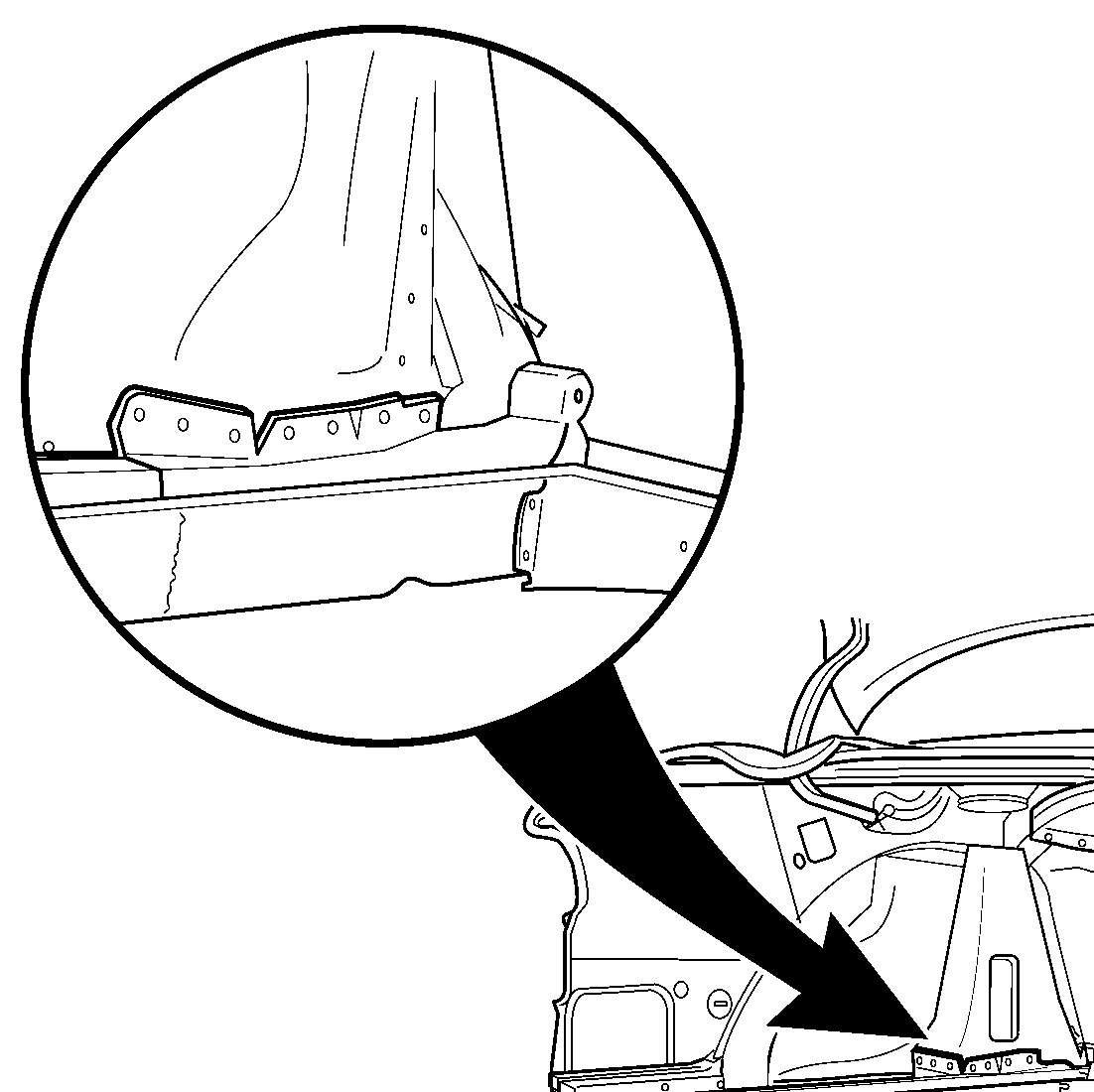For 1990-2009 cars only
Removal Procedure
- Visually inspect and restore as much of the damage as possible to factory specifications.
- Remove all related panels and components including gas tank and rear suspension.
- Remove the following as necessary:
- Remove inner wheelhouse braces, 2 per side, to gain access to hidden spot welds.
- Drill out all factory welds at the floor pan and inner wheelhouse locations.
- Remove the damaged rail.
- Prepare mating surfaces for installation of service part.

Important: When replacing a rail in its entirety, the weld flange that mates with the wheelhouse must be bent upward. The service assembly is supplied with this flange in a horizontal position.
| • | Sealers |
| • | Sound deadeners |
| • | Anti-corrosion materials |
Preparation for Installation
- Measure from outside edge of horizontal flange on service part inward 30 mm (1 3/16 in) and mark every 50 mm (2 inches).
- Connect markings with straight edge to create a radius line.
- Notch metal in appropriate locations along the edge of panel to the radius line, to easily bend the flange upward along radius line.
- Create upturned flange by bending with pliers.
- Hammer and dolly to bend into a vertical position.
- Drill 8 mm (5/16 in) holes duplicating number and location from original rail.

Installation Procedure
- Position the new rail in place.
- Secure rail by installing seat belt bolt through factory hole into rail, then drawing rail into place by tightening bolt.
- Check for proper alignment using three-dimensional measuring.
- With the new rail in place, plug weld all the holes created from the removal process.
- Plug weld floor to new rail in remaining areas.
- Clean and prepare all welded surfaces.
- Apply an approved anti-corrosion primer.
- Apply sealers and refinish as necessary
- Install all related panels and components.

Important: Prior to refinishing, refer to GM 4901M-2000 "GM Approved Refinish Materials" for recommended products. Do not combine paint systems. Refer to paint manufacturer's recommendations.
